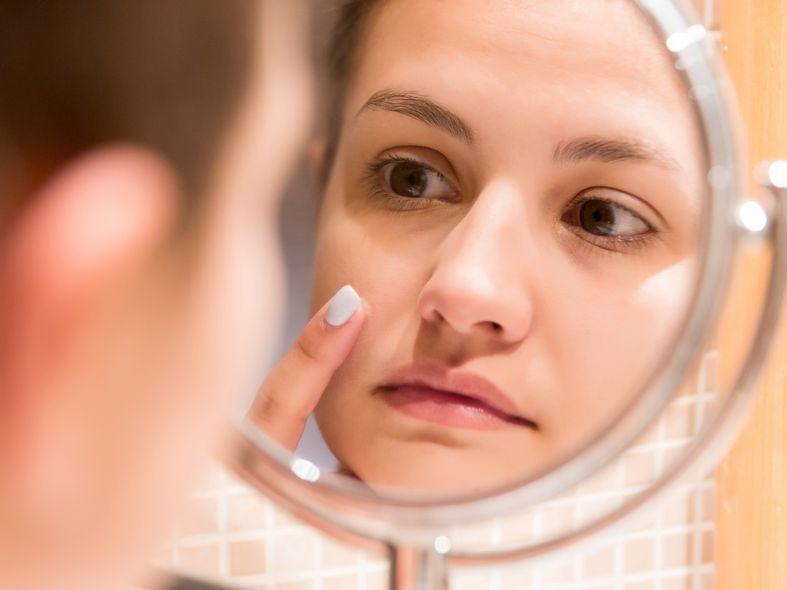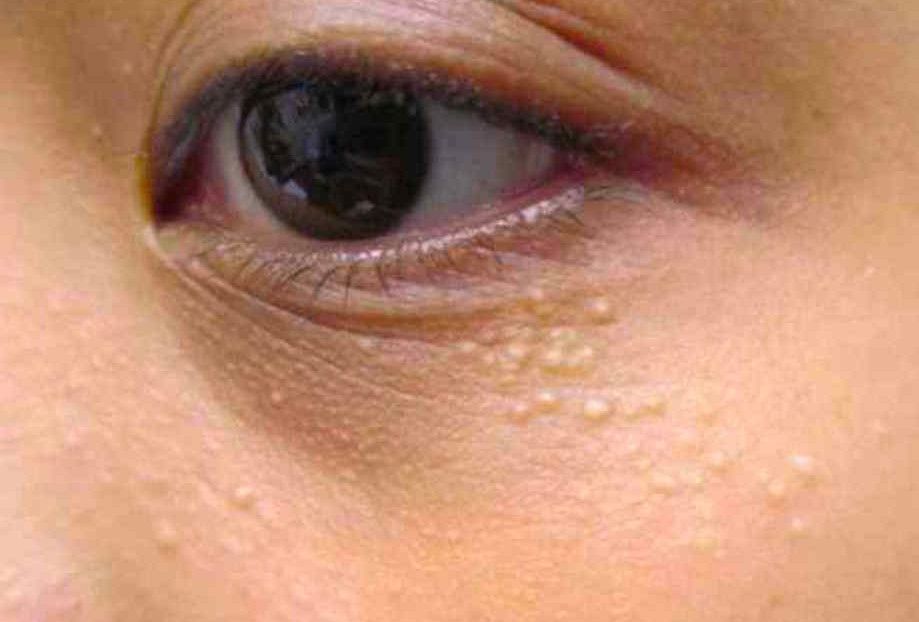- Home
- Trend
- Weight Loss Strategies
- Acne Tips
- Hair Health Information
- Blemish Removal Tips
- Acne Scar Removal Tips
- Muscle Building Techniques
- Intimate Care Tips
- Postpartum Intimate Care
- Eye Bags Wiki
- Tips for Face Slimming
- Secret of Permanent Hair Removal
- Breast Enlargement Tips
- Cure to Snoring
- Marionette Lines
- Skin-Tightening Secrets
Clogged pores, blackheads, whiteheads, and pimples are all skin concerns that most women dread. These issues make the skin appear rough, dull, and tired. Over time, clogged pores can turn into milia, also known as closed comedones, which are hard to eliminate quickly and can significantly affect your appearance. Even makeup can't fully conceal them. To regain your confidence and go makeup-free, this article explores what clogged pores are, how they form, how they differ from blackheads and whiteheads, and how to treat them. If you're curious about clogged pores, don’t miss this guide—let’s dive right in!
Quick Facts: What Are Clogged Pores?

Clogged pores, also known as closed comedones, are a stubborn skin issue. They are typically flesh-colored and feel like small bumps under the skin. They’re not red, inflamed, or painful, and don’t itch—but they can make the skin look bumpy and uneven. Clogged pores tend to appear on the forehead, around the eyes, cheeks, chin, and hairline. If left untreated, they may eventually develop into milia.
Quick Facts: What Are Milia?

Like clogged pores, milia are tough to treat and don’t respond well to standard skincare or acne products. They can appear anywhere on the face and affect all skin types. Milia commonly show up around the eye area and are characterized by their round shape, well-defined edges, high density, and clustered appearance.
免費體驗
Acne Treatment
1 Minute Self-Registration
Date should not be before minimal date
Quick Facts: Causes of Clogged Pores and Milia
Clogged pores mainly result from a thickened stratum corneum (outer skin layer), which blocks the pores and traps sebum beneath the surface. Incomplete makeup removal and poor cleansing habits can cause cellular waste to accumulate, leading to clogged pores. Using the wrong skincare products or following an improper skincare routine can also disrupt your skin’s oil-water balance—overproducing oil while lacking hydration—which accelerates the formation of clogged pores.
Milia, on the other hand, are often more difficult to deal with than blackheads or acne. They may require professional tools or treatments. They are linked to issues like poor lipid metabolism, excessive or insufficient sebum, and an over-thickened stratum corneum. When too much oil blocks the sebaceous glands, small yellowish or white bumps may appear and gradually harden into milia.
Quick Facts: How to Distinguish Between Clogged Pores, Blackheads, and Whiteheads
Many people confuse clogged pores with blackheads and whiteheads, as they’re all common skin issues. However, knowing the differences is essential—treating them incorrectly can worsen the condition and lead to breakouts or scarring. Here's how they differ:
1. What Are Closed Comedones (Whiteheads)?
Cause: Closed comedones form when the follicular opening is blocked by keratinized cells and sebum, with the pore fully sealed by a layer of skin.
Appearance: Tiny white bumps that are not always visible to the eye but can be felt as rough texture—commonly found on the chin.
Impact: These can interfere with makeup application, making your skin tone look uneven. Because the follicle is sealed, trying to squeeze them can force the blockage deeper, possibly causing inflammation and acne scars.
2. What Are Blackheads?
Cause: Similar to whiteheads, blackheads are formed by a buildup of dead skin cells and oil, but they remain open to the air. When the oil oxidizes, it turns black—hence the name.
Appearance: Resemble sesame seeds, larger than whiteheads, usually found on the nose. Squeezing gently after cleansing can release a waxy, semi-transparent plug.
Impact: While less likely to cause acne than whiteheads, accumulated debris can enlarge the pores and worsen the skin's appearance over time.
3. What Are Clogged Pores?
Cause: Technically a type of closed comedone, clogged pores are often caused by heavy or poorly absorbed skincare products. Over-cleansing or over-layering can cause excess residue to accumulate and form clogged pores.
Appearance: Skin-toned bumps that appear on the forehead, eye area, cheeks, chin, and hairline—similar to acne but without inflammation.
Impact: The most frustrating part about clogged pores is that they’re visible but hard to remove. Squeezing them often leads to inflammation or acne rather than relief.
Bad Habits That Contribute to Clogged Pores
Even though clogged pores are more common in oily skin, other skin types are not immune. Here are four daily habits that might be worsening your skin:
Habit 1: Using Eye Creams That Are Too Rich
Eye creams are great for reducing fine lines, but overly rich formulas can’t be absorbed by the thin skin around the eyes, leading to oil buildup and clogged pores. Opt for lightweight, easily absorbed eye creams instead.
Habit 2: Leaving Eye Mask Essence on Too Long
Similar to eye creams, excess serum from eye masks can build up if not rinsed off. After using an eye mask, be sure to rinse your skin to avoid accumulation.
Habit 3: Using the Wrong Makeup Removal Method
Many people use thick cleansing oils on the entire face, including eyes and lips. If not thoroughly rinsed, these oils can clog pores. Use dedicated, lightweight removers for eyes and lips, and always follow up with a second cleanse using a gentle face wash.
Habit 4: Neglecting Cleansing and Exfoliation
A thick stratum corneum can trap oil and debris. Dermatologists recommend foaming up your cleanser before massaging it in circles for 30 seconds, then rinsing thoroughly. For your second cleanse, press the foam gently into the skin, especially around the nose, for another 30 seconds. Use a gentle exfoliant once a week to prevent buildup and reduce clogged pores.
免費體驗
Acne Treatment
1 Minute Self-Registration
Date should not be before minimal date
Two Dermatologist-Approved Treatments for Clogged Pores
There are countless remedies online claiming to treat clogged pores, but not all are effective or safe. Here are two dermatologist-recommended methods:
Treatment 1: Salicylic Acid
Salicylic acid helps slough off dead skin cells and penetrates pores to dissolve sebum buildup. It prevents clogged pores and clears existing blockages. As a chemical exfoliant, it leaves skin smoother and more radiant. Choose products with 2% salicylic acid—even sensitive skin types can usually tolerate this concentration.
Treatment 2: Oral Isotretinoin (Vitamin A Acid)
Isotretinoin regulates oil gland activity, reduces sebum production, inhibits acne bacteria, and minimizes follicular inflammation and keratin buildup. It can significantly reduce clogged pores. However, side effects include dry, itchy, peeling skin and an initial acne purge. Long-term use may impact liver function, so regular blood tests are necessary. It’s not safe during pregnancy due to the risk of birth defects.
Can Vaseline Help Remove Blackheads?
One popular DIY remedy for “strawberry nose” is Vaseline. Since its main ingredient is mineral oil, it can dissolve the oil in blackheads.
How to use it:
1. Clean your face thoroughly.
2. Apply Vaseline to the nose and massage.
3. Apply a thick layer, cover with plastic wrap, and use warm water to heat it up (no air pockets).
4. After 30 minutes, remove the wrap and use a cotton swab to gently extract the blackheads.
A Universal Solution for Clogged Pores: Perfect Medical Acne Treatment
Clogged pores often appear silently and can be hard to remove. That’s why it's important to choose a safe, gentle, and effective treatment. Here's one that ticks all the boxes!
Perfect Medical’s Acne Treatment is a non-invasive, drug-free solution that works for all skin types. It uses dual-channel spiral suction technology. One channel combines vacuum microdermabrasion with a purifying serum to painlessly remove dead skin and residue. The other delivers a medical-grade essence deep into the skin to trigger collagen repair, fight inflammation and bacteria, and deeply hydrate the skin. This balances oil production, unclogs pores, and improves clogged pores and acne.
Sign up now: Perfect Medical Acne Treatment Free Trial免費體驗
Acne Treatment
1 Minute Self-Registration
Date should not be before minimal date
FAQ

What are milia?
Milia, like clogged pores, are hard to treat with daily skincare. They can appear anywhere on the face and affect all skin types. Common around the eyes, they’re small, round, well-defined, and densely clustered.
Why do clogged pores and milia form?
Clogged pores result from thickened skin that traps sebum, often worsened by habits like improper makeup removal. Using the wrong skincare products can also disrupt oil-water balance, causing buildup that leads to clogged pores. Milia form similarly but may also involve irregular lipid metabolism or excessive skin dryness or oiliness.
What bad habits can lead to the formation of milia (tiny bumps)?
One of them is using eye cream that’s too rich! Many women use eye cream regularly in hopes of nourishing the skin around their eyes and reducing fine lines. However, improper use can increase the chances of developing milia. This is especially true for those with very thin skin around the eyes, as they’re not suited for thick, oily creams. These heavier textures can’t be fully absorbed, leading to excess oil buildup and eventually forming tiny bumps. That’s why it’s recommended to choose a lightweight, refreshing eye cream with ingredients that are easily absorbed by the skin.
Can applying Vaseline help with blackheads?
In addition to the above methods, there’s also a popular home remedy for treating strawberry nose—Vaseline. It’s said that Vaseline can help remove stubborn blackheads. To understand its effectiveness, we need to look at its main ingredient: mineral oil. This ingredient can dissolve the oily substances clogging pores, making it theoretically effective in clearing up blackheads. Before using this method, it’s important to cleanse your face. Then, apply a generous amount of Vaseline to your nose and gently massage it in. After massaging, apply a thick layer, cover it with plastic wrap, and then press a warm towel or use hot water to warm the plastic wrap—ensuring no air gets trapped inside. After 30 minutes, remove the wrap and use a cotton swab to gently massage the area and extract the blackheads.
Any recommended acne treatments?
Perfect Medical’s “Breakup with Acne” treatment is a non-invasive, drug-free method for improving acne. It uses dual-spiral vacuum drainage technology with two separate channels. One channel utilizes exclusive vacuum dermabrasion combined with a purifying solution to gently and painlessly remove dead skin cells and other surface impurities. The second channel infuses medical-grade serums deep into the skin to rapidly activate collagen self-repair mechanisms. This process also provides deep anti-inflammatory, antibacterial, and hydrating effects, helping to balance oil production and unclog pores. The result is the dissolution of whiteheads and blackheads, as well as improved milia and acne conditions.









